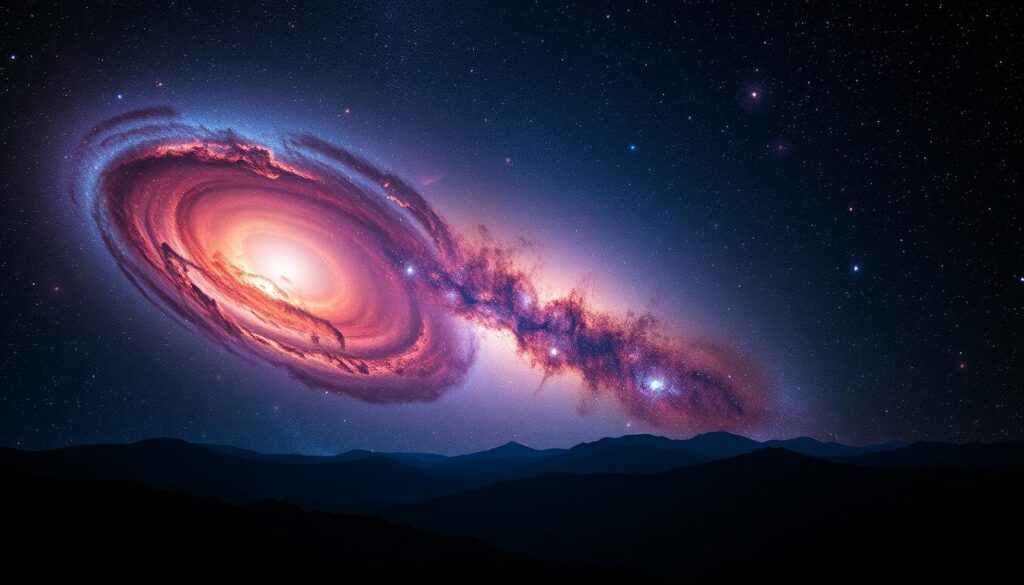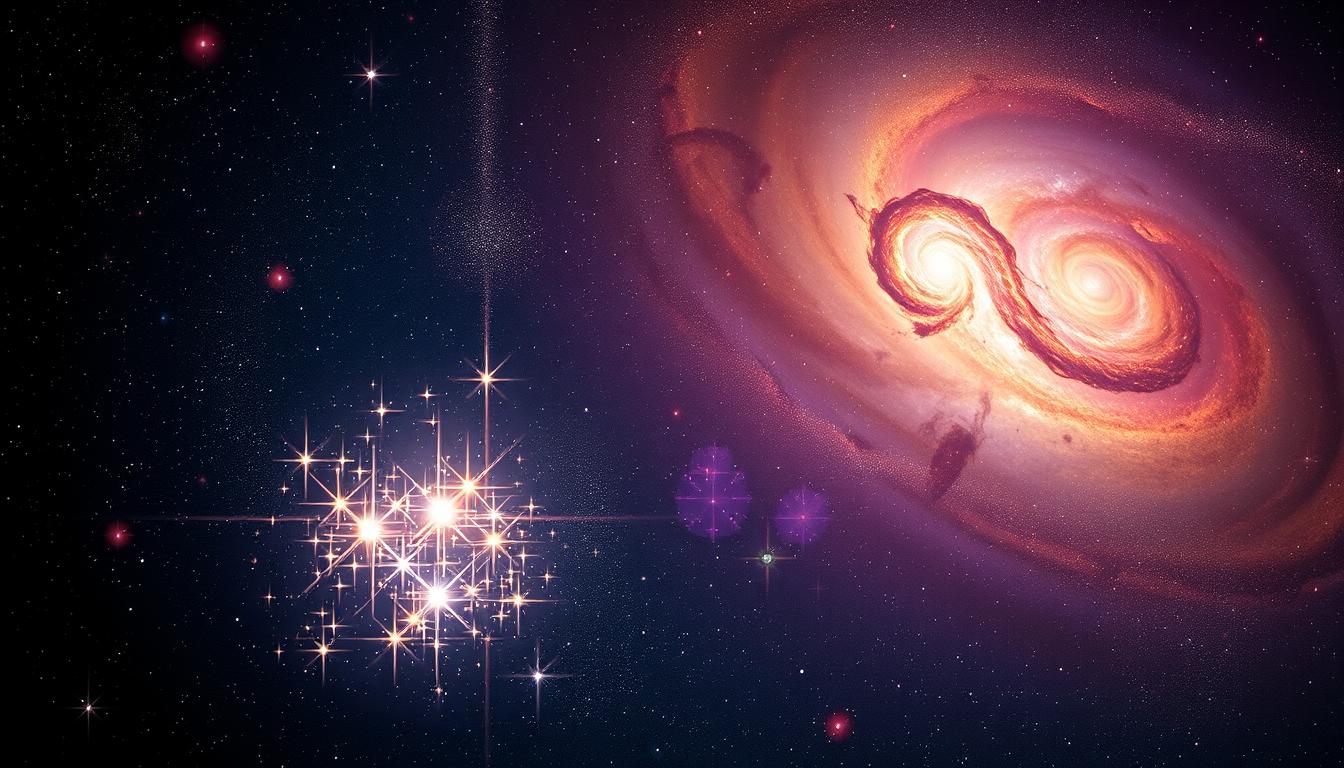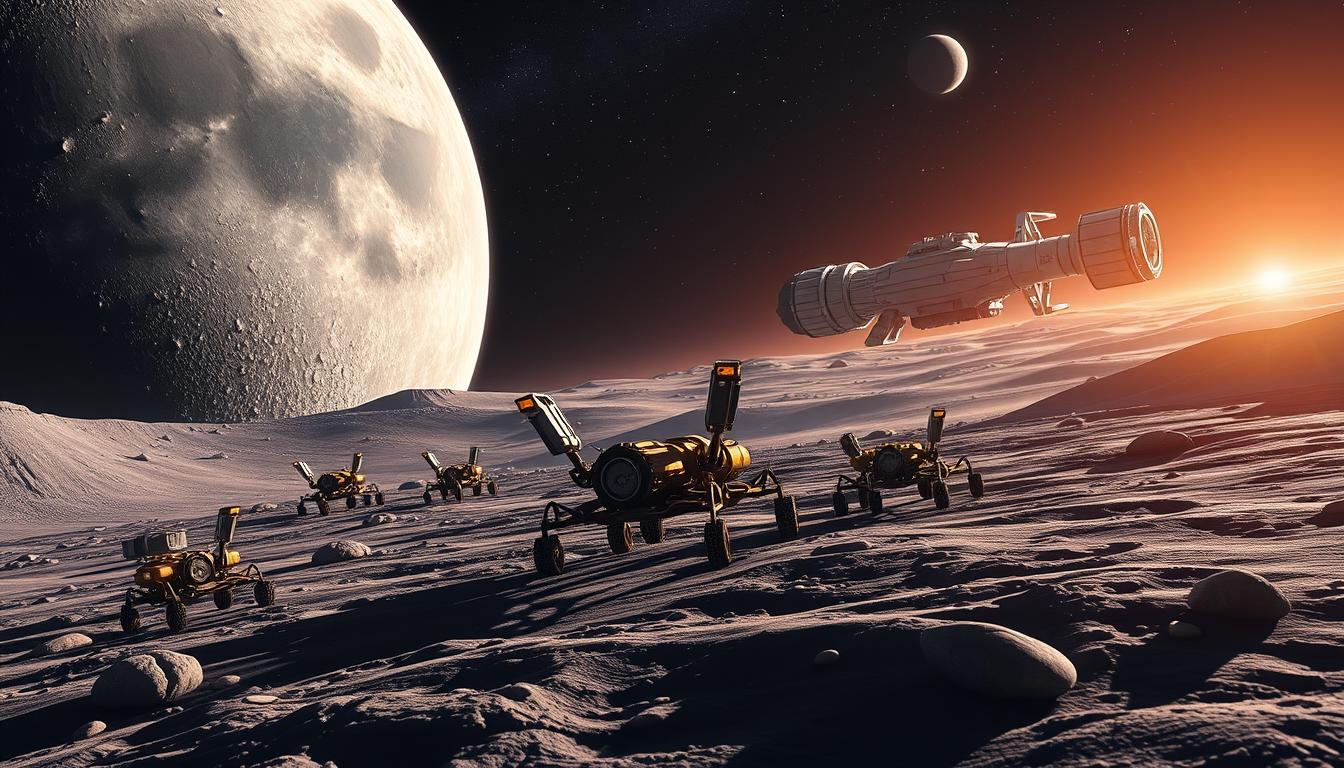NASA’s James Webb Space Telescope (JWST) has found 44 stars 6.5 billion light-years away. This is a big deal. It’s the most stars found from the early universe. It shows how good the Webb Telescope is.
This discovery is very important. It helps us learn about the universe and how galaxies change. The details were shared in Nature Astronomy. They show how the JWST can help us understand the universe better.
Key Takeaways
- The Webb Telescope detected a record 44 stars in a distant galaxy, 6.5 billion light-years away.
- This discovery far surpasses the seven stars previously identified by the Hubble Space Telescope.
- Gravitational lensing, used to magnify distant light, played a crucial role in this significant finding.
- The detected stars include mainly red supergiants, unlike the blue supergiants found before.
- This milestone helps us learn more about dark matter and the gravitational lensing plane.
The Revolutionary Power of the Webb Telescope
The James Webb Space Telescope is a huge achievement in science and engineering. It’s the biggest and most advanced space telescope ever made. It’s exploring the universe like never before.
It’s about 1 million miles from Earth. The Webb Telescope uses its high-tech optics to take amazing pictures and gather data. This data changes how we see Astronomy.
Overview of the James Webb Space Telescope
The Webb Telescope was made to explore the universe. It looks at events from the Big Bang to the start of life-supporting solar systems. Its design lets it study stars and cosmic structures billions of light-years away.
It can see distant galaxies better than before. This helps scientists learn about Dark Matter. Dark Matter is a big part of the universe’s mass.
Significance in Space Exploration and Astronomy
The Webb Telescope is making big contributions to Space Exploration. It found 44 stars in a galaxy 6.5 billion light-years away. This is a huge discovery.
Before, the Hubble Space Telescope found only seven stars at similar distances. The Webb Telescope is studying red supergiants. These stars help create heavy elements in galaxies.
| Feature | Webb Telescope | Hubble Space Telescope |
|---|---|---|
| Distance of Stars Detected | 6.5 billion light-years | Around 1 billion light-years |
| Number of Stars Detected | 44 stars | 7 stars |
| Primary Focus | Dark Matter and galaxy evolution | Near-Earth observations |
| Significance | Revolutionizes distant star observation | Foundational for earlier astronomical studies |
The Webb Telescope shows how far technology and science have come in Astronomy. It’s changing our view of the universe. It helps scientists learn about Dark Matter and how galaxies formed.
History Made As Webb Telescope Finds 44 Stars Near Big Bang
The Webb Telescope found 44 stars near the Big Bang. This is a big deal in space exploration. It shows how stars and galaxies formed early in the universe.
Details of the Discovery
The Webb Telescope is very good at finding things. It found stars that were there just 1 billion years after the Big Bang. These stars are very hot, up to 144,000 degrees Fahrenheit.
The Role of the Abell 370 Galaxy Cluster
The Abell 370 galaxy cluster is key to this discovery. It’s about 4 billion light-years away. The cluster’s gravity made the stars’ light stronger, so we could see them.
This is a big step forward. Before, the Hubble Space Telescope could only see a few stars. The Webb Telescope is showing us more about the universe.

Gravitational Lensing: A Key Discovery Technique
Gravitational lensing is a new way to see far-off stars and galaxies. It happens when a big object, like a galaxy cluster, bends light from things behind it. Thanks to the James Webb Space Telescope, scientists found 44 stars 6.5 billion light-years away.
Understanding Gravitational Lensing
Gravitational lensing lets us see faint stars and galaxies. The Abell 370 galaxy cluster helped by making light from stars bigger. This lets us see details we couldn’t before.
This method helps us understand how the universe grew. It also shows where dark matter is.
Einstein’s Predictions and Modern Observations
Albert Einstein’s ideas led to gravitational lensing. He talked about the “Einstein Ring.” Today, we see this in real stars and galaxies.
The Webb Telescope shows us Einstein was right. This shows how far we’ve come in understanding space.
| Aspect | Details |
|---|---|
| Technique | Gravitational Lensing |
| Massive Object | Abell 370 Galaxy Cluster |
| Distance of Stars | 6.5 billion light-years |
| Number of Stars Detected | 44 |
| Previous Detection | Hubble: 7 Stars |
| Star Type Found | Red Supergiants |
The Science Behind the Red Supergiants
Recent discoveries in Astronomy have given us new insights into Red Supergiant Stars. These huge stars are important for understanding how the universe changes over time. Thanks to the James Webb Space Telescope, scientists can now study these stars in ways they couldn’t before.
Characteristics of Red Supergiant Stars
Red Supergiant Stars are really big and bright. They are much larger than our Sun. Their cool temperature makes them look red in the sky.
These stars are very good at forming. Unlike old models, they can turn 40% of gas into stars. This is much more than the 20% thought before.
Comparing Findings to Previous Discoveries
Red Supergiant Stars have changed how we see the early universe. Old ideas said stars grew slowly over billions of years. But now, we know these stars grew fast in the first billion years after the Big Bang.
This new info makes us want to learn more about early galaxies. Scientists plan to use JWST and ALMA to study these stars further. They hope to find out even more about the universe.
Conclusion
The James Webb Space Telescope found 44 stars 6.5 billion light-years away. This is a big deal in astronomy. It beats the Hubble Space Telescope’s record.
These stars include red supergiant stars. They help us learn about stars at the end of their lives. This is very important for understanding stars.
This find helps us know more about galaxies and the universe. It also helps us learn about dark matter. Scientists used a special method called gravitational lensing to find these stars.
With the Webb Telescope, we will learn even more about the universe. We will see how galaxies looked in the past. This will challenge what we think about the universe’s age.
These discoveries change how we see the universe. They make us question old ideas about galaxies. The Webb Telescope will help us explore the universe even more.


